This case study looks at the turn-round in the fortunes of Skoda which has come about through investment in new technology, management training, product development and effective marketing.
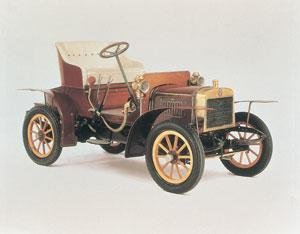
The Skoda company began back in 1895 when Czech entrepreneurs, Vaclav Laurin and Vaclav Klement began making bicycles in the Czech town of Mlada Boleslav. They very soon expanded into motorcycle manufacture and by 1905 had made their first motor cars. In the early days the vehicles were quite grand and were as stylish and innovative as many of the famous names of Western Europe and America. The Skoda reputation for quality was such that during the twenties it was the only manufacturer granted a licence by the famous Hispano-Suiza company marque to build its luxury limousines.
After the second world war Czechoslovakia became more and more isolated from outside influences and new vehicle production at the Skoda factory became increasingly basic and functional reflecting the values of the now established Communist government. Raw materials were poor and with little outside intervention Skoda was unable to keep up with western motor manufacturers in terms of style and innovation. The authorities made the rules and even insisted on such things as windscreens not being raked too far back in case the cars looked decadently sporty. The factory concentrated on mass production of standardised products and all resources were ploughed into this. The first millionth Skoda car of a single type was produced in Mlada Boleslav during this period on 29 August 1973.
However, even in the unfavourable environment of a poorly managed economy where innovation was not encouraged the Skoda factory managed to preserve the skills of craftsmanship, invention and design for which it had once been famous. This strength was to prove invaluable when the time came for the rejuvenation of the Czech economy and the company.
All change!
After the Velvet Revolution in 1989, the newly formed Czech Republic began rebuilding its economy in the free market and Skoda quickly realised that things had to change if it was to successfully compete in this market. Skoda began the search for an economically sound partner with financial, technical and managerial resources to help improve the efficiency of its factories and assist in the company’s future development. A number of leading automotive manufacturers demonstrated a keen interest, but the Czech government decided to accept the Volkswagen Group proposal, with the full approval of Skoda’s management, engineers and Union members. A key element in accepting Volkswagen for this partnership was the guarantee of the independence and selfreliance of the existing factories and Skoda marque. Skoda was to retain its own identity and responsibility for product development, production and sales operation.
On April 16th 1991, Skoda became a public company and the fourth brand in the International Volkswagen Group, the others being Volkswagen, Audi and SEAT. The Czech company contributed its assets in the former state firm to this new business, thus becoming co-owner of Skoda. The Volkswagen Group contributed capital, advanced technology and managerial assistance and expertise. The Skoda model in production at that time was the Favorit, which had almost no competition on the home market until after the Velvet Revolution. Under the new Volkswagen management the
Favorit model underwent a thorough upgrading, which resulted in 800 technical improvements, including reducing noise levels, single point fuel injection and new safety features. Build quality was improved to meet the rigorous standards upheld by all Volkswagen manufacturing plants and the aesthetic appeal of the Skoda cars was improved with the introduction of new colours and trims, ensuring it was able to hold its place against new competitors in the Czech Republic and improve its appeal in Skoda’s export markets.
Changing the image
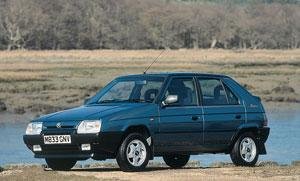
People who know about the motor industry, know about Skoda’s illustrious past. For the first half of this century Skoda was one of the world’s greatest marques. It was the manufacturer of some of the most prestigious cars available, such as the luxury Hispano-Suiza, it was a leader in motor car design and technical innovation and a pioneer in the new realm of motorsport. However, the economic situation surrounding the communist years in Czechoslovakia dictated that the Skoda factory became product oriented rather than market oriented, mass producing a basic product rather than matching its products to the needs of customers and market demands. Inevitably, in such a highly competitive area as the motor industry, this caused the reputation and image of Skoda and its products to suffer.
The final stage of the transformation of Skoda took place in October 1994 with the international launch of the new Skoda Felicia. The Felicia is a modern, spacious hatchback and estate car, economical enough to meet the needs of a buyer who wants to make a sensible choice, which embraces Europe’s highest quality control and safety standards.
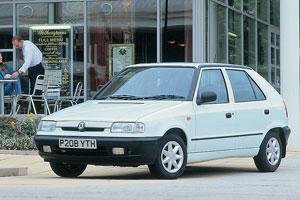
The Felicia hatchback made its UK debut in May 1995 with a 1.3 litre engine and was followed in 1996 by an estate car, plus a new 1.6 litre version with the engine from the Volkswagen Golf. A similarly sourced 1.9 litre diesel engine version will follow by the end of 1996. The Felicia is a high quality, good specification product which takes on Western, Japanese and South East Asian rivals on their own terms, but with a considerable price advantage. The Felicia range pricing starts at £6299 on the road.
It should immediately become obvious to the reader why Skoda has been transformed. The buyer is able to get exceptional value for money by purchasing a modern looking car with all of the best Volkswagen technology but at a bargain price. This process of development is set to keep rolling:
- In 1996 new commercial vehicles will be launched, a Pick Up and a Van.
- In 1996 a larger saloon car, the Octavia, will be launched.
- In 1998, a new car with a wide range of variants.
With the launch of larger cars, Skoda will be entering a new market sector for the first time, giving it an opportunity to increase sales and move into the highly competitive fleet market.
Changing perceptions
How then has the public responded to the transformation at Skoda? Skoda clearly has a major task to change the public’s perceptions, which for many are still rooted in the past. The key to altering the public’s perception is making people aware of what is happening at Skoda with the company and the cars and to convey the company’s personality and strengths. Research has shown Skoda’s brand personality to be:
- Normal
- Friendly
- Human
- Having a sense of humour
- Honest
- Accessible and uncomplicated.
It is this personality and image that Skoda communicates through its advertising and publicity. Skoda’s advertising campaign has revolved around showing consumers what changes have taken place in the company and cars and these advertisements have been led with the strapline:
“We’ve changed the car.Can you change your mind?”
The emphasis has been on the partnership with Volkswagen and the value for money pricing. The safety, reliability and quality of the cars has also been highlighted through components being supplied by Europe’s top manufacturers (Siemens, Bosch, Lucas, Blaupunkt, Continental etc).
The UK market
Skoda has already made substantial advances in the UK and it is expected that this trend will gain increasing momentum now that consumers’ perceptions have started to change. With the launch of new products on the UK market, Skoda has engaged in extensive research to find out how perceptions of Skoda are changing in the mid-1990s. For example, research into the Felicia has shown that consumers see it as:
- An attractive car
- Comfortable
- Having a spacious interior
- Well specified
- Having high quality interior upholstery.
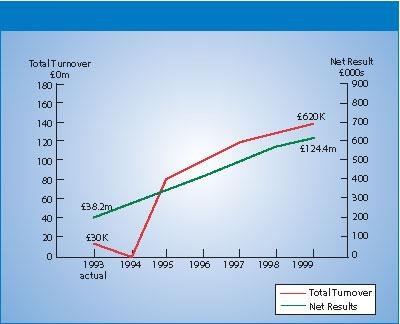
All of which make it an acceptable product. The Felicia meets the requirements and expectations of a car in the small car sector in terms of styling and modern looks. In terms of specification, it is seen as an average car which is well equipped. It meets buyers’ needs through its interior and boot space. The quality of its build is regarded as acceptable and buyers are pleased with its performance in cruising, the ride it gives and in handling.
Where the Felicia exceeds the expectations of a small car is that it is seen as a “big” small car, with an attractive level of interior finish and upholstery. Consumers are pleased with its level of comfort and specific features, such as central locking, immobiliser and its five gears. However, criticisms are that it does not have power steering, it is not innovative enough in design and does not have alloy wheels as standard. On balance the car is seen positioned as:
- A “big” small car within the small car sector
- An average person’s car
- A family car
- For old and young people
- An all purpose car.
The research shows that, in terms of public perceptions, the Felicia elevates the Skoda image and presents evidence of an improving marque which builds cars as good as any other in that sector.
Research
In winning over potential buyers, Skoda has identified four groups, some of whom are more likely to buy than others:
+++ ACCEPTORS
“A good car, I will consider it/buy it” (owners & non-owners).
+ PERSUASIVES
“I would not like to be the first to own one.” (non-owners)
– CURRENT REJECTORS
“They will have to improve further before I consider.” (non-owners)
— RESIDUAL REJECTORS
“I would never consider a Skoda” (non-owners).
The market currently lies with acceptors, but it is beginning to extend to persuasives and current rejecters. The research shows that the Felicia’s most persuasive feature is “value for money.” The research also tells us what consumers perceive as representing value for money.
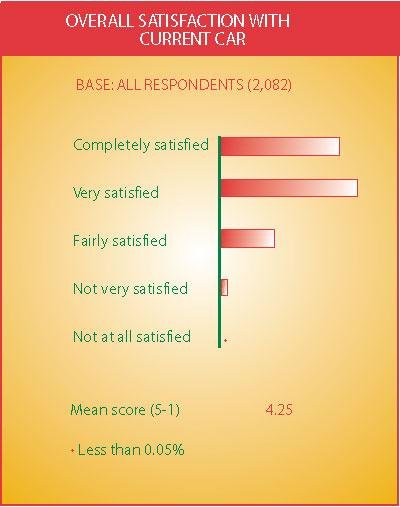
A major factor in altering people’s perceptions of Skoda is the belief that substantial change has taken place and will continue to take place. It is the link with Volkswagen which is perceived by the public as offering proof. In the past, the stereotyped view of a Skoda owner is an older male on a low income, but this is no longer the case. The changes that have taken place in the last few years have attracted younger people, females and people with higher incomes to purchase the new Skodas. If we then go on to examine current owners’ feelings about the Skoda which they drive, the evidence indicates a high level of satisfaction.
Conclusion
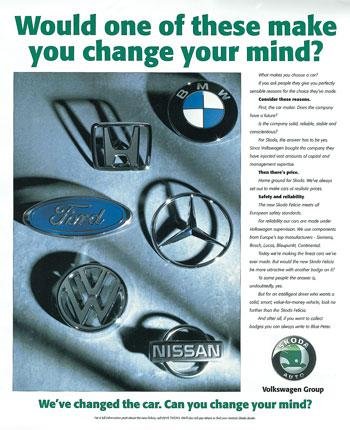
The Skoda case study provides us with an object lesson in how an organisation can transform itself. Until 1990, Skoda was able to prosper because it had a protected domestic market and a product which did not face competition.
Once the Czech Republic opened its borders to free competition, there was no way the company could survive, without radical changes to its products and organisation: it would have been forced out of business. However, Skoda was fortunate to have good production facilities, a highly skilled labour force and the technical know-how which, coupled with a rapid injection of management expertise and finance from Volkswagen, has enabled it to move ahead. Skoda continues to supply the major share of new cars at home in the Czech Republic, despite competition from imported marques. It also meets an important consumer requirement in other European markets for high quality cars at affordable prices.
The Skoda Felicia has strengthened the Skoda image with existing customers and improved it amongst consumers as a whole and as a result has brought new customers to the Skoda brand. In particular there has been a marked expansion in the number of young people and females buying the car, as well as those in middle management positions. The old jokes about Skodas are rapidly fading into “folklore” as more and more Felicias are seen on the roads. People who at one time might have laughed at a Skoda joke are today purchasing their first Skoda.
